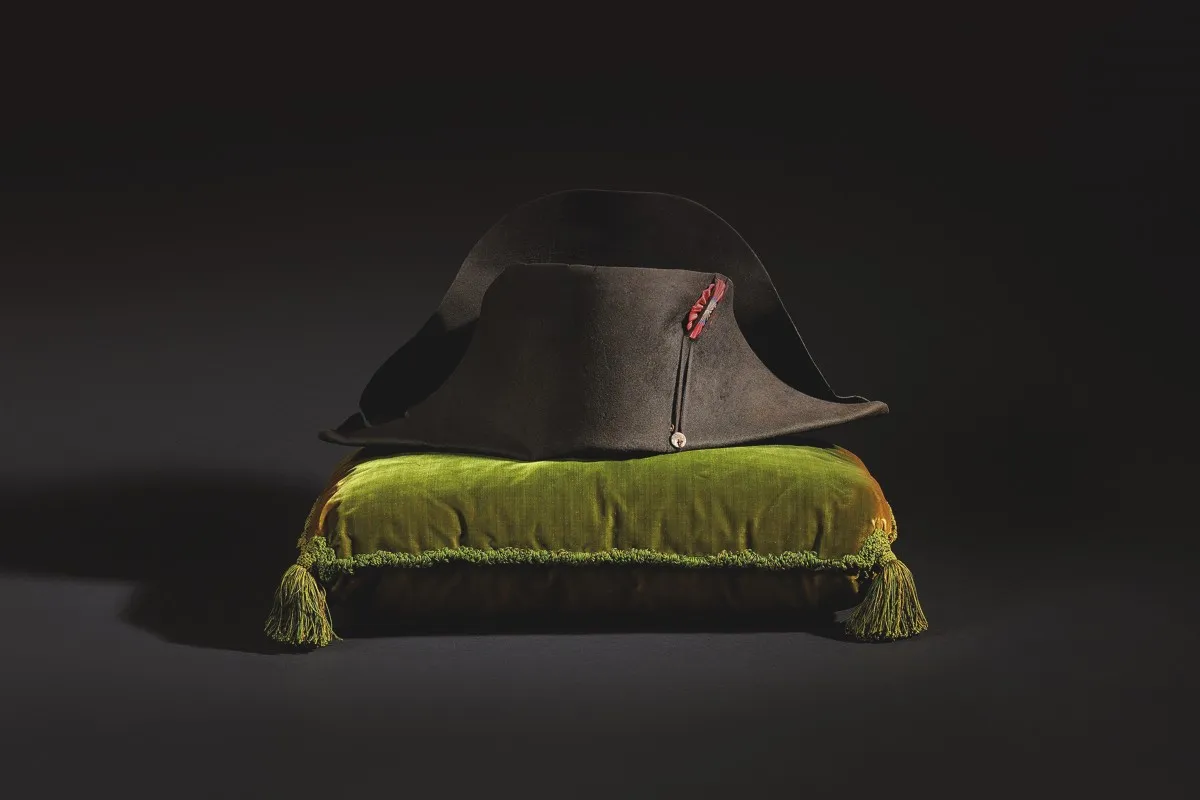The black bicorn hat worn by Napoleon Bonaparte during his military campaigns in 1807 and sold for over £300,000 at Christie's on 9th July 2015. While that was an impressive result, it has not topped the record of French auction house Binoche et Giquello who sold another of Napoleon's hats in 2014 for an head-turning £1.1m.
When that hat was presented, something unique happened. The auctioneer Alexandre Giquello says that never before had he heard applause before a lot was sold. ‘Sometimes at a great auction people will clap after a lot but never before,’ he says. ‘The energy in the room was electric.’
The cause was the hat, measuring 49cm long and just over 20cm high. Not a prepossessing piece in itself but one of just 19 in existence known to have belonged to Napoleon Bonaparte.
There was good reason to be excited. On an estimate of €300,000–€400,000 (£214,000–£285,500), the bids climbed in heated competition until the hammer came down at €1.5m (£1.1m), making the bicorn one of the most expensive pieces of ‘Napoleonica’ ever sold.
Tattered in places and with a button missing, the hat’s value came from its impeccable provenance. It was given to Napoleon’s cavalry veterinarian Joseph Giraud in gratitude for his services and was passed down through the Giraud family until it was sold to Prince Louis II of Monaco in 1926.
Louis amassed a collection of almost 1,000 objects relating to the Corsican-born emperor. It was this collection that Giquello’s auction house, Binoche et Giquello, in collaboration with fellow Parisian auctioneers Osenat, sold over a weekend last November. The hat was the headline lot.
Perhaps only Churchill’s homburg or Chaplin’s bowler are as instantly recognisable as Napoleon’s bicorn. In an era when most men wore bicorn hats most of the time – as Napoleon expert Peter Hicks says, ‘[Back then] not wearing a hat was like not wearing underpants’ – it might seem odd that Napoleon’s became so iconic. But, in fact, his hat was the heart of a carefully managed personal marketing campaign.
The bicorn was a descendant of the tricorn hat, which came into being when Spanish soldiers fighting in Flanders at the beginning of the 18th century pinned their broad brimmed hats up at the front and sides. From there, the tricorn developed into the bicorn, with just the front and back folded, in the late 1700s.

Initially worn side to side (‘athwart’), wearing bicorns front to back became the popular style from the late 1790s – except for Napoleon who, in order to be recognised on the battlefield, insisted on wearing his athwart. ‘Napoleon decided early on to use the hat as an advertisement for himself,’ says Hicks. The hat formed part of a campaign that also involved a self-promoting newspaper, Le Bulletin de la Grande Armée, letters about himself written in the third person and the decision to always wear a grey coat over the uniform of the Grenadier Guards or that of Les Chasseurs, the light cavalry of the Imperial Guard.
Each year the emperor would have four hats made to exacting specifications by Poupard et Compagnie. No leather was allowed (Napoleon was allergic to it) and many of the hats had extra lining as he hated having a cold head. His chief valet Constant wore each hat in before it was allowed to grace the imperial head.
‘The hats were unshowy. Napoleon wanted to be seen as a man of the people,’ explains Hicks. ‘Everything was designed to make him seem smaller, which is why he was known as le petit corporal and his hat as le petit chapeau.’
Such was the success of the story of the little corporal who rose to become emperor of France that it continues to spread. His tale was appropriated as a symbol of the American dream when the essayist Ralph Waldo Emerson declared Napoleon ‘the idol of the common man’ in his 1850 text Representative Men. More recently, it has been adopted in east Asia. ‘You can see the appeal for Korean and Japanese businessmen,’ says Peter Hicks. ‘Hard work is key to their culture and the Napoleon myth gives credence to their new-found wealth.’
It’s no surprise then that, on 15th November 2015, it was a South Korean food company called Harim that paid €1.5m for the bicorn. It will take pride of place in the foyer of its new office block in Seoul, a long way from the battlefields of Europe where it first saw service. Now what would Napoleon make of that?